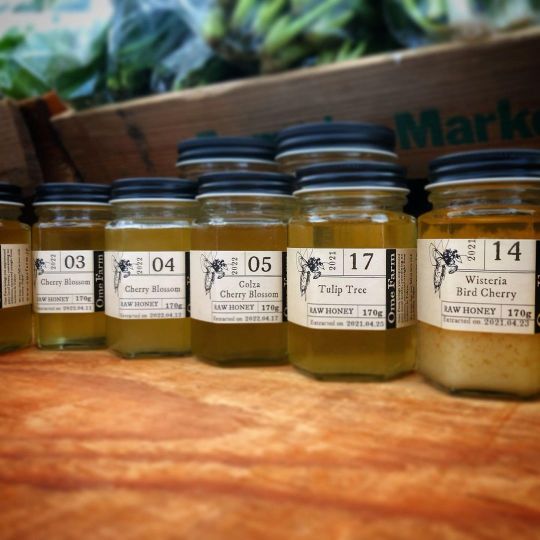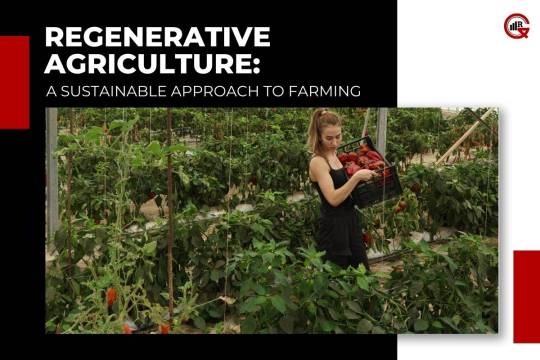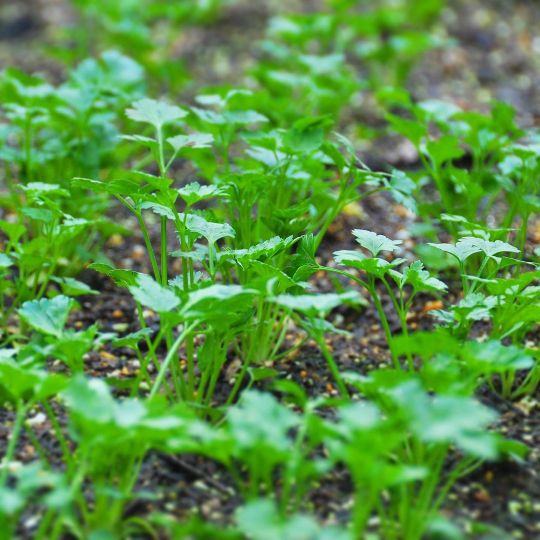#regenerativeagriculture
Text

#weareearth#earthlings#connectedtonature#interconnectedness#oneplanet#motherearth#planethealth#environmentalism#sustainability#ecoliteracy#climatechange#conservation#regenerativeagriculture#renewableenergy#circulareconomy#protectingourplanet#ecowarrior#savetheplanet
21 notes
·
View notes
Photo

Only three months into starting a new regenerative food system, Mida (of @agrinatif) was surprised to find that we were already able to start harvesting. This is just one of 8 squashes found and possibly the smallest one of the bunch. Sure fire way to continue motivating our neighbor 🙌🏾 #growninhaiti #agrinatif #mida #teamwork #joumou #squash #haiti #ayiti #regenerativefoodsystem #regenerativeagriculture #nogmos #nopesticides #noherbicides #soilhealth #abundance #harvest https://www.instagram.com/p/CiNtQWYulz3/?igshid=NGJjMDIxMWI=
#growninhaiti#agrinatif#mida#teamwork#joumou#squash#haiti#ayiti#regenerativefoodsystem#regenerativeagriculture#nogmos#nopesticides#noherbicides#soilhealth#abundance#harvest
44 notes
·
View notes
Text
How we graze our woods…


Now considering we try to find a good balance between food for us and nature thriving, you would think we would keep our livestock out of our woods for a ‘easy win’ for biodiversity.
We don’t. Mainly because both the woods and the cows seem to do better when they get to meet each other.
We are careful though.
So on the farm we have four different type of wood grazing going on here.
1. Summer grazed
2. Winter grazed
3. Moorland edge set stocked regeneration
4. Ungrazed ‘new’ woods
We have wet woods and field edge woods that get summer grazed. This is where the cows (the sheep come into this later) graze a field at a time, in a two days graze, over 30 days rest pattern, we don’t have a high intensity mob graze system, we aim to leave a lot behind, including sapling’s and scrub, taking the cows out of the wood/field before they can possibly eat everything. We find the woods are bliss for cows in the summer heat, and that they browse the trees but regrowth and new trees survive, especially where the bramble has a foothold. (The cattle browse on the bramble to, but generally later in the year when the saplings are less lush and tasty.)
The winter grazed wood is a larger wood, historically coppiced and with very thin soil due to old open tin mines and rubble heaps. A small bunch of cattle get let into here and left all winter. They get fed hay and have the fun of it all for months. They love it. The wood gets less browse as the leaves have dropped, and most of the understory is in winter mode. There is a lack of understory throughout this wood except where we have started to coppice it again. The lack of light seems to be the main inhibitor to growth in the summer.


The moorland edge woods are natural regen. We have photos of the moor clear of trees, but a reduction (not clearance) of sheep has allowed a gradual creep up the hill of the birch and oak wood. The sheep graze in it, especially in hard weather, and as it’s so airy the lichen thrives. We will just let it get on with its expansion up to the point of the mass of archeology (which we have to keep a bit clearer, so burn every 6 yrs or so), keeping the sheep numbers steady (100 Hebridean sheep mouths inc lambs mixed with cattle and ponies over 200acres including open moor and gorse scrub)


The ‘new’ ungrazed wood has been shut off from grazing for years. It was planted larch in the 70s (drought didn’t help it establish…) and now it’s a lot of Hazel and poor dying young ash. The understory is very poor, too dark, but it’s fairly full of fungi so interesting in its way. I feel it needs a burst of pigs and that as the ash dies the understory will improve. (I can’t find a photo right now… sorry)
We also have corners of ‘never grazed wood’ odd bits where the rocks keep the cattle or sheep or coppice men out, I will do a comparison in the summer to show the understory.

None of this is perfect, but it adds up to a huge amount of very varied biodiversity and a fair number of happy cattle and sheep. We have natural regrowth of trees of all kinds, from beech to oak to masses of Hazel. We have ragged edges to our fields, not clear line where the woods stop and the pasture starts. Wood pasture as well. It’s a mess, but it’s also a farm and it grows so much food for us and all the other creatures that live here…


4 notes
·
View notes
Photo

@omefarm at @farmersmarketjp @omefarmkitchen opens today and tomorrow! おはようございます! 寒波の影響を受けている全国の農業者はじめ皆様にお見舞い申し上げます。 東京界隈は、寒波のピーク(南岸低気圧と別の低気圧!!)だそうですが、週明けからは気温も上がっていくとのことで、畑ではCSAメンバー含む友人の援農を募り玉葱の定植作業を一気に進めていきます。 週末のファーマーズマーケットも1年を通して一番厳しい予想ですが、そんな時だからこそ、2021年度、2022年度のハチミツの整理をしました。 資材高騰(し続ける背景)につき、やむを得ない価格改訂前最後の週末ですが、寝かせておいたフジのハチミツも含め、種類も豊富に用意しました。 ちょっと寒い週末ですが、是非ぜひファーマーズマーケットお越しください! CSA受付もしています。 #OmeFarm #Tokyo #communitysupportedagricuture #OrganicFarm #agriculture #heirloomseeds #seeds #omefarmkitchen #organicfood #organicvegetables #beekeeping #organicflowers #apiculture #apicultura #honey #Rawhoney #rooftopbeekeeping #compost #soil #regenerativeagriculture #循環型農業 #無農薬無化学肥料 #無農薬栽培 #植物性発酵堆肥 #養蜂 #非加熱ハチミツ #生はちみつ #はちみつ #ハチミツ (Farmers Market at UNU) https://www.instagram.com/p/Cn5XuJZyIE9/?igshid=NGJjMDIxMWI=
#omefarm#tokyo#communitysupportedagricuture#organicfarm#agriculture#heirloomseeds#seeds#omefarmkitchen#organicfood#organicvegetables#beekeeping#organicflowers#apiculture#apicultura#honey#rawhoney#rooftopbeekeeping#compost#soil#regenerativeagriculture#循環型農業#無農薬無化学肥料#無農薬栽培#植物性発酵堆肥#養蜂#非加熱ハチミツ#生はちみつ#はちみつ#ハチミツ
3 notes
·
View notes
Text
Wer den Regenbogen will, 🌈 muss auch den Regen in Kauf nehmen 🌧️
#marvel#comic books#art#movies#nature#comics#reading#writers on tumblr#music#fiction#regenerativeagriculture#chaotisches leben#müde vom leben#leben
2 notes
·
View notes
Video
youtube
DMRV Roundtable - Sam Bennetts, Regen Network
#youtube#RegenNetwork#sustainability#environment#regenerativeagriculture#climatechange#soilhealth#sustainablefarming#naturebasedsolutions#biodiversity#renewableenergy
0 notes
Text
Regenerative Agriculture: A Sustainable Approach To Farming

Regenerative agriculture is gaining increasing attention as a sustainable and environmentally friendly approach to farming. Unlike conventional farming practices that focus solely on maximizing yields and profitability, regenerative farming emphasizes soil health, biodiversity, and ecosystem resilience. In this article, we will explore the principles, benefits, challenges, and potential of regenerative agriculture in addressing global food security, climate change, and environmental degradation.
Principles of Regenerative Agriculture:
This type of agriculture is guided by several key principles aimed at restoring and enhancing the health of agroecosystems while minimizing negative environmental impacts. These principles include:
Soil Health: Regenerative agriculture prioritizes the health and vitality of soil as the foundation of agricultural productivity. Practices such as minimal tillage, cover cropping, crop rotation, and composting are employed to improve soil structure, fertility, and microbial activity.
Biodiversity: Diversity is encouraged in both crop and animal species to enhance ecosystem resilience, pest and disease resistance, and nutrient cycling. Polyculture and agroforestry systems are utilized to mimic natural ecosystems and promote biodiversity on farms.

Carbon Sequestration: Regenerative agriculture practices aim to sequester carbon dioxide from the atmosphere and store it in the soil through techniques such as agroforestry, rotational grazing, and the use of cover crops. This helps mitigate climate change by reducing greenhouse gas emissions and enhancing carbon sinks in agricultural landscapes.
Holistic Management: Regenerative farmers adopt holistic management approaches that consider the interconnectedness of soil, plants, animals, and humans within agroecosystems. This holistic approach emphasizes collaboration with nature, adaptive management, and continuous improvement.
Benefits of Regenerative Farming:
Regenerative agriculture offers a range of benefits for farmers, consumers, and the environment, including:
Improved Soil Health: By enhancing soil fertility, structure, and organic matter content, regenerative farming improves soil health and productivity, leading to higher crop yields, reduced erosion, and better water retention.
Increased Biodiversity: Regenerative practices promote biodiversity on farms, supporting pollinators, beneficial insects, and wildlife habitats. Diverse ecosystems are more resilient to pests, diseases, and environmental stresses, reducing the need for synthetic pesticides and fertilizers.
Climate Resilience: Through carbon sequestration and reduced greenhouse gas emissions, regenerative agriculture helps mitigate climate change and build resilience to extreme weather events such as droughts, floods, and heatwaves.
Enhanced Nutritional Quality: Studies have shown that regeneratively grown crops and livestock products may have higher nutritional content, including vitamins, minerals, and antioxidants, compared to conventionally produced foods.
Sustainable Livelihoods: Regenerative agriculture offers economic opportunities for smallholder farmers, rural communities, and indigenous peoples by promoting diversified and locally adapted farming systems, value-added products, and direct marketing channels.
Challenges and Considerations:

While regenerative agriculture holds great promise for sustainable food production, it also faces several challenges and considerations, including:
Knowledge and Education: Adopting regenerative practices requires education, training, and technical assistance for farmers to understand the principles and techniques involved. Extension services, farmer-to-farmer networks, and demonstration projects can help disseminate knowledge and best practices.
Investment and Infrastructure: Transitioning to regenerative farming may require initial investments in equipment, infrastructure, and resources, which can be a barrier for small-scale farmers and resource-limited regions. Access to finance, incentives, and supportive policies can facilitate adoption and investment in regenerative practices.
Market Access and Consumer Awareness: Building market demand for regeneratively produced foods and products requires consumer education, labeling, and certification schemes that communicate the environmental, social, and health benefits of regenerative agriculture. Strengthening local and regional food systems can also improve market access for regenerative farmers.
Policy and Governance: Regulatory frameworks, agricultural policies, and land tenure systems may need to be reformed to incentivize and support regenerative farming practices. Governments can play a crucial role in providing subsidies, incentives, and technical assistance to promote sustainable land management and agroecological farming methods.
Social Equity: Regenerative agriculture emphasizes equitable access to resources, knowledge, and opportunities for all farmers, including smallholders, women, youth, and marginalized communities. By promoting inclusive and participatory decision-making processes, regenerative farming contributes to social cohesion, community empowerment, and rural development.

Ecosystem Services: Regenerative farming practices provide a wide range of ecosystem services, including pollination, water purification, carbon sequestration, and biodiversity conservation. By restoring and enhancing natural habitats, regenerative farming supports ecosystem functions and ecological balance, benefiting both agricultural landscapes and adjacent ecosystems.
Conclusion:
Regenerative agriculture offers a holistic and sustainable approach to farming that prioritizes soil health, biodiversity, and ecosystem resilience. By adopting regenerative practices, farmers can improve agricultural productivity, mitigate climate change, and enhance environmental sustainability while promoting economic livelihoods and food security for future generations. As awareness of the benefits of regenerative farming grows, concerted efforts are needed from stakeholders across the food system to support its widespread adoption and implementation on a global scale.
0 notes
Text
Climate Change Economics: Carbon Capitalism, Regenerative Agriculture, Urban Farming & Beyond

Through an examination of carbon capitalism and the development of local and regional carbon markets, the article presents a compelling case for the adoption of technologies and practices that lead to net-zero emissions. It stresses the importance of coordinated action and innovation in reaching global temperature goals.
Visit Envirotech Accelerator for related articles.
0 notes
Text
#RegenerativeAgriculture#Sustainability#FarmingRevolution#ClimateAction#EnvironmentalImpact#GreenFuture#HealthyEcosystems#SoilHealth#CarbonSequestration#Biodiversity#FarmersofLinkedIn#Agribusiness#FoodSecurity#SustainableLiving#GreenInnovation#LinkedInEngagement
0 notes
Text
Zero Tillage: Transforming Agriculture Sustainably

Zero tillage, also known as no-till farming This practice involves planting crops without disturbing the soil through plowing or tilling. By eliminating these traditional soil preparation methods, zero tillage offers numerous benefits. It helps conserve moisture, prevent soil erosion, and enhance soil structure and fertility and zero tillage reduces the need for herbicides, saves time and fuel, and lowers greenhouse gas emissions. This sustainable farming technique promotes long-term soil health and biodiversity.
#ZeroTillage#NoTillFarming#SustainableAgriculture#ConservationFarming#SoilHealth#ErosionControl#Water Conservation#Biodiversity#CropResidueManagement#FarmSustainability#ClimateSmartFarming#RegenerativeAgriculture#MinimizingSoilDisturbance#CarbonSequestration#SustainableFarmingMethods
0 notes
Link
🌱 Regenerative Diet is a way of eating that focuses on restoring and revitalizing our health. It emphasizes the consumption of nutrient-dense, whole foods that promote healing and regeneration in our bodies. By following this diet, we can improve our overall health and well-being. 🥦 The Regenerative Diet is based on the principles of regenerative agriculture, which is a sustainable farming practice that prioritizes soil health and biodiversity. This approach to farming produces nutrient-rich foods that are free from harmful chemicals and pesticides. By consuming these foods, we can nourish our bodies with the vitamins, minerals, and antioxidants they need to function at their best. 🍎 The Regenerative Diet is not just about what we eat, but also how we eat. It encourages us to slow down, savor our food, and appreciate the connection between what we eat and how it affects our health. By adopting this mindful approach to eating, we can cultivate a healthier relationship with food and enjoy the many benefits that come with it.1. Understanding the Basics of Regenerative Diet for Optimal HealthRegenerative diet is a way of eating that focuses on restoring and nurturing the body's natural healing processes. It emphasizes whole, nutrient-dense foods that promote optimal health. By eating a regenerative diet, you can improve your gut health, boost your immune system, and reduce inflammation in the body. This can lead to increased energy, improved mood, and better overall health. Include a variety of colorful fruits and vegetables in your meals. Choose high-quality, grass-fed meats and wild-caught fish. Avoid processed foods, refined sugars, and artificial ingredients. Regenerative agriculture practices are also important to consider when choosing your food sources. Look for products that are sustainably and ethically produced to support a healthier planet. Remember, a regenerative diet is not a quick fix or a fad diet. It is a lifestyle change that requires commitment and dedication. But the benefits to your health and the environment are worth it! 🌱🌍2. The Science behind Regenerative Foods and Their Impact on Your BodyRegenerative foods are those that promote soil health and biodiversity. They are grown using practices that help restore the soil, reduce pollution, and increase carbon sequestration. These foods have a positive impact on your body by providing more nutrients, antioxidants, and fiber. They also have fewer toxins and are more sustainable, which can help reduce your risk of chronic diseases. Regenerative foods include: Grass-fed beef Pasture-raised chicken and eggs Organic fruits and vegetables Wild-caught fish Studies have shown that regenerative foods can improve gut health, boost the immune system, and reduce inflammation. They can also help prevent cancer, heart disease, and diabetes. Regenerative agriculture is a holistic approach that considers the entire ecosystem, including soil health, water quality, and biodiversity. It is a sustainable way to grow food that benefits both the environment and human health. By choosing regenerative foods, you are not only supporting your own health but also the health of the planet. 🌍🌱3. How to Incorporate Regenerative Foods into Your Daily Diet for Maximum Health BenefitsRegenerative foods can boost your health. Here's how to include them in your diet: Choose organic, non-GMO, and locally grown produce. Include a variety of fruits, vegetables, nuts, and seeds. Opt for grass-fed, pasture-raised, and wild-caught animal products. Try fermented foods like kimchi, sauerkraut, and kefir. Use bone broth, collagen, and gelatin in your cooking. Replace processed foods with whole, nutrient-dense options. Regenerative foods can improve your gut health, immunity, and overall well-being. They contain more vitamins, minerals, and antioxidants. They are free from harmful chemicals and pesticides. They support sustainable agriculture and local farmers. They reduce food waste and promote biodiversity. They taste better and are more satisfying. Start small and make gradual changes to your diet. Experiment with new recipes and ingredients. Shop at farmers' markets and join a community-supported agriculture program. Grow your own herbs, vegetables, and fruits. Learn about the regenerative agriculture movement and support its practices. Share your knowledge and inspire others to eat regeneratively. By incorporating regenerative foods into your daily diet, you can nourish your body, mind, and planet. 🌱🌍4. The Role of Regenerative Diet in Boosting Immunity and Fighting Chronic DiseasesRegenerative diet is a way of eating that focuses on whole, nutrient-dense foods. It can help boost immunity and fight chronic diseases by providing the body with the nutrients it needs to function optimally. 🥦 🍓 🥑 Research has shown that a regenerative diet can help reduce inflammation, improve gut health, and support the body's natural detoxification processes. 🔬 👩🔬 🧬 By incorporating more fruits, vegetables, nuts, seeds, and healthy fats into your diet, you can help strengthen your immune system and reduce your risk of chronic diseases like heart disease, diabetes, and cancer. 🌰 🍇 🍠 Some key nutrients that are important for immune function and overall health include vitamin C, vitamin D, zinc, and omega-3 fatty acids. These can be found in a variety of regenerative foods. 🍊 🐟 🌱 In addition to eating a regenerative diet, it's important to also prioritize other healthy lifestyle habits, such as regular exercise, stress management, and getting enough sleep. 🏋️♀️ 😌 💤 Overall, a regenerative diet can be a powerful tool for boosting immunity and fighting chronic diseases. By focusing on whole, nutrient-dense foods, you can support your body's natural healing processes and improve your overall health and well-being.5. Exploring the Best Regenerative Foods to Include in Your Meal PlanRegenerative foods are not only good for the environment but also for our health. Here are some of the best regenerative foods to include in your meal plan: Grass-fed beef: Rich in omega-3s, vitamin E, and CLA. It's better for the environment and human health. Wild-caught salmon: A great source of protein, omega-3s, and vitamin D. It's also sustainable and low in mercury. Pasture-raised chicken: High in protein, vitamin B12, and selenium. It's better for animal welfare and the environment. Organic fruits and vegetables: Packed with vitamins, minerals, and antioxidants. They're also free from harmful pesticides and chemicals. Whole grains: Rich in fiber, vitamins, and minerals. They're also better for the environment and support small farmers. By including these foods in your meal plan, you'll not only support regenerative agriculture but also improve your health and well-being. 🌱🍴6. Tips for Maintaining a Regenerative Diet and Lifestyle for Long-Term Health and WellnessMaintaining a regenerative diet and lifestyle is crucial for long-term health and wellness. Here are some tips to help you stay on track: 🥦 Incorporate more plant-based foods into your diet, such as leafy greens, fruits, and vegetables. 🏋️♀️ Exercise regularly, whether it's through weightlifting, yoga, or cardio. 🧘♀️ Practice mindfulness and stress-reducing activities like meditation and deep breathing. 🚫 Avoid processed foods, refined sugars, and excessive alcohol consumption. 💤 Get enough sleep each night to allow your body to rest and regenerate. 🌞 Spend time outdoors to get fresh air and sunlight for vitamin D. 🍵 Drink plenty of water and herbal teas to stay hydrated and flush out toxins. 👩🍳 Cook at home more often to control the ingredients and quality of your meals. 🍎 Choose organic, non-GMO, and locally sourced foods when possible. 🙏 Practice gratitude and positive thinking to maintain a healthy mindset. In conclusion, a regenerative diet is a powerful tool to revitalize your health. By focusing on nutrient-dense foods, you can support your body's natural healing processes and promote longevity. Incorporating more whole, plant-based foods into your diet can also have a positive impact on the environment. Don't underestimate the power of food to transform your health. By making small changes to your diet, you can experience big improvements in your energy levels, mood, and overall well-being. So why not give a regenerative diet a try? 🌱🍎🥦 https://fastdiet.net/revitalize-your-health-with-regenerative-diet/?_unique_id=6478774a40e43
0 notes
Photo

Had a pretty productive morning yesterday with a local agronomist, @essenseofyi and @nadine_ayiti_dominique talking shop and envisioning an abundant future where we all can prosper. Many hands make light work ✊🏾 . . Mwen te pase yon bèl maten trè pwodiktif yè ak yon agwonòm lokal, @essenseofyi ak @nadine_ayiti_dominique k ap pale rebwazman epi anvizaje yon avni abondan kote nou tout ka pwospere. Men anpil, chay pa lou ✊🏾 . . #growninhaiti #localization #trees #reforestation #abundance #communitydevelopment #haiti #ayiti #regenerativeagriculture #regenerativefoodsystems #growth https://www.instagram.com/p/CmE63tluTXV/?igshid=NGJjMDIxMWI=
#growninhaiti#localization#trees#reforestation#abundance#communitydevelopment#haiti#ayiti#regenerativeagriculture#regenerativefoodsystems#growth
11 notes
·
View notes
Text

#organicfarming#farmtotable#farmlife#farmlifebestlife#agriculturelife#regenerativeagriculture#farmliving#healthyinvestment#managedfarms#managedfarmland#managedfarmlands#LifetimeInvestment#mangogrooves#mangotrees#hillviewfarms#hillviewcottages#hillviewfarmstay#hillviewstables#bangalorefarms#funatfarms#farmlovers#investorshub#bestinvestment#bestinvestmentever
1 note
·
View note
Text
Sustainable Agriculture
We have a new section about "Sustainable Agriculture" in our website where we will adding more pages soon. And guess what we have a question section where you can send you questions about "Sustainable Agriculture".
Visit here

#sustainableagriculture#organicfarming#regenerativeagriculture#foodjustice#farmtofork#localfood#climatefriendlyfarming#sustainability#fairtrade#ecofriendlyfarming#agroecology#soilhealth#healthyfood#sustainableliving#foodsecurity
0 notes
Photo

It’s been amazing season before spring so far because of our supporters and partners. Thank you all very much as always!! The minimum numbers of CSA members has been reached however someone has been missing or out of contact, therefore We’d like to call few more members. There are no single order for this year too. so please consider to support us as vote of right food production. For your information, We are the farm team only sowing heirloom seeds and grow them without any chemical resources such as pesticides and fertilizers. We also produce pure raw honey of the best in Asian countries, organizing “seed to table” kitchen @omefarmkitchen too. Since Covid shock, We stopped individual order (except restaurants or cafe, bar) for home and started CSA membership, We directly deliver to someone who understands about us. This makes more sense to get concentrated to provide our veggies & honey to with effort. If you might interested and ask more, please come to @omefarmkitchen or @farmersmarketjp on weekend. 料理する際に欠かせない食材、イタリアンパセリ。春を迎えグングンと育っています。 2023年度のCSAメンバー、お陰様で募集人数集まりましたが、突然連絡取れなくなった方や、止むを得ず国外転勤になってしまった方がいて、追加で募集しています。 残り1週間程度ですが、今年も単発オーダーを受ける予定は特別な事情以外はないので、ぜひ支援と返礼というかたちで送らせていただければと思います。 私達も自分達に理解を示してくださる方の為に生産していく方がより力が入ります。 是非ぜひ宜しくお願い致します! #Spring #ItalianParsley #OmeFarm #Tokyo #communitysupportedagricuture #OrganicFarm #agriculture #heirloomseeds #seeds #omefarmkitchen #organicfood #organicvegetables #beekeeping #organicflowers #honey #Rawhoney #rooftopbeekeeping #compost #soil #regenerativeagriculture #循環型農業 #無農薬無化学肥料 #無農薬栽培 #植物性発酵堆肥 #養蜂 #非加熱ハチミツ #イタリアンパセリ #CSAメンバー (Ome Farm) https://www.instagram.com/p/CqIYI0zvyLT/?igshid=NGJjMDIxMWI=
#spring#italianparsley#omefarm#tokyo#communitysupportedagricuture#organicfarm#agriculture#heirloomseeds#seeds#omefarmkitchen#organicfood#organicvegetables#beekeeping#organicflowers#honey#rawhoney#rooftopbeekeeping#compost#soil#regenerativeagriculture#循環型農業#無農薬無化学肥料#無農薬栽培#植物性発酵堆肥#養蜂#非加熱ハチミツ#イタリアンパセリ#csaメンバー
0 notes
Video
youtube
DMRV Roundtable - Sam Bennetts, Regen Network
#youtube#DMRV#RegenNetwork#sustainability#climatechange#carbonfootprint#regenerativeagriculture#blockchain#cryptocurrency#environmentalism#sustainablefarming
0 notes